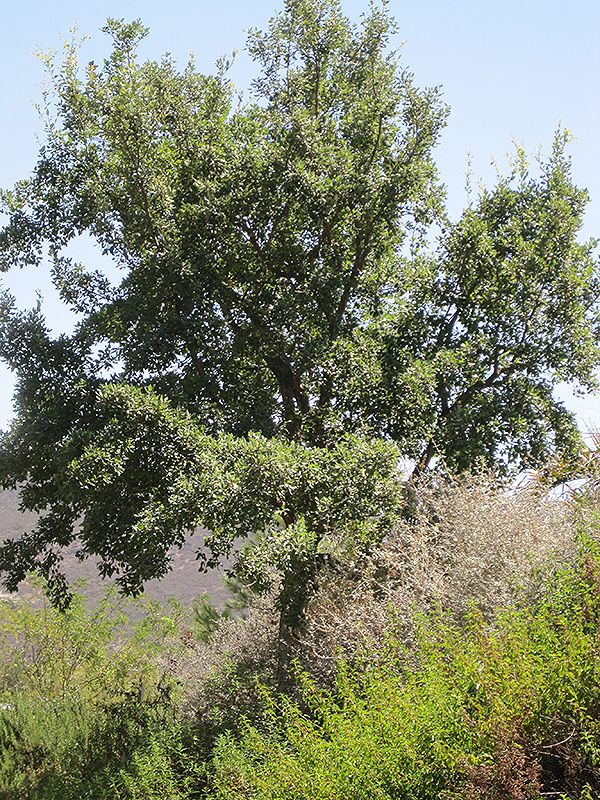Height: 70 feet
Spread: 70 feet
Sunlight:
![]()
Hardiness Zone: 7b
Description:
A medium sized evergreen variety that is noted for its ornamentally attractive gray bark with deep reddish fissures; an outstanding shade tree that adds great texture to the landscape
Ornamental Features
Cork Oak is primarily valued in the landscape for its ornamental upright and spreading habit of growth. It has dark green foliage with gray undersides. The oval leaves remain dark green throughout the winter. It produces brown acorns in early fall. The fruit can be messy if allowed to drop on the lawn or walkways, and may require occasional clean-up. The furrowed gray bark is extremely showy and adds significant winter interest.
Landscape Attributes
Cork Oak is an evergreen tree with an upright spreading habit of growth. Its average texture blends into the landscape, but can be balanced by one or two finer or coarser trees or shrubs for an effective composition.
This tree will require occasional maintenance and upkeep, and should only be pruned after flowering to avoid removing any of the current season's flowers. It is a good choice for attracting squirrels to your yard. Gardeners should be aware of the following characteristic(s) that may warrant special consideration;
- Messy
- Disease
Cork Oak is recommended for the following landscape applications;
- Accent
- Shade
- Hedges/Screening
Planting & Growing
Cork Oak will grow to be about 70 feet tall at maturity, with a spread of 70 feet. It has a high canopy with a typical clearance of 6 feet from the ground, and should not be planted underneath power lines. As it matures, the lower branches of this tree can be strategically removed to create a high enough canopy to support unobstructed human traffic underneath. It grows at a medium rate, and under ideal conditions can be expected to live to a ripe old age of 300 years or more; think of this as a heritage tree for future generations!
This tree should only be grown in full sunlight. It prefers dry to average moisture levels with very well-drained soil, and will often die in standing water. It may require supplemental watering during periods of drought or extended heat. It is not particular as to soil type, but has a definite preference for acidic soils. It is somewhat tolerant of urban pollution. This species is not originally from North America.


